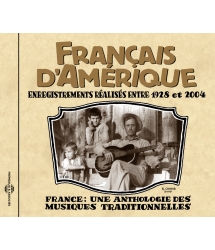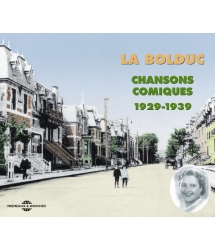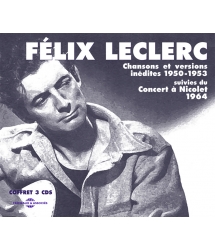- Our Catalog
- Philosophy
- Philosophers of the 20th century and today
- History of Philosophy (PUF)
- Counter-History and Brief Encyclopedia by Michel Onfray
- The philosophical work explained by Luc Ferry
- Ancient thought
- Thinkers of yesterday as seen by the philosophers of today
- Historical philosophical texts interpreted by great actors
- History
- Books (in French)
- Social science
- Historical words
- Audiobooks & Literature
- Our Catalog
- Jazz
- Blues
- Rock - Country - Cajun
- French song
- World music
- Africa
- France
- Québec / Canada
- Hawaï
- West Indies
- Caribbean
- Cuba & Afro-cubain
- Mexico
- South America
- Tango
- Brazil
- Tzigane / Gypsy
- Fado / Portugal
- Flamenco / Spain
- Yiddish / Israel
- China
- Tibet / Nepal
- Asia
- Indian Ocean / Madagascar
- Japan
- Indonesia
- Oceania
- India
- Bangladesh
- USSR / Communist songs
- World music / Miscellaneous
- Classical music
- Composers - Movie Soundtracks
- Sounds of nature
- Our Catalog
- Youth
- Philosophy
- News
- How to order ?
- Receive the catalog
- Manifesto
- Dictionnary











- Our Catalog
- Philosophy
- Philosophers of the 20th century and today
- History of Philosophy (PUF)
- Counter-History and Brief Encyclopedia by Michel Onfray
- The philosophical work explained by Luc Ferry
- Ancient thought
- Thinkers of yesterday as seen by the philosophers of today
- Historical philosophical texts interpreted by great actors
- History
- Books (in French)
- Social science
- Historical words
- Audiobooks & Literature
- Our Catalog
- Jazz
- Blues
- Rock - Country - Cajun
- French song
- World music
- Africa
- France
- Québec / Canada
- Hawaï
- West Indies
- Caribbean
- Cuba & Afro-cubain
- Mexico
- South America
- Tango
- Brazil
- Tzigane / Gypsy
- Fado / Portugal
- Flamenco / Spain
- Yiddish / Israel
- China
- Tibet / Nepal
- Asia
- Indian Ocean / Madagascar
- Japan
- Indonesia
- Oceania
- India
- Bangladesh
- USSR / Communist songs
- World music / Miscellaneous
- Classical music
- Composers - Movie Soundtracks
- Sounds of nature
- Our Catalog
- Youth
- Philosophy
- News
- How to order ?
- Receive the catalog
- Manifesto
- Dictionnary
FRENCH & ENGLISH SONGS, COUNTRY, NATIVE MUSIC
Ref.: FA5191
EAN : 3561302519128
Artistic Direction : MARTIN DUCHESNE
Label : Frémeaux & Associés
Total duration of the pack : 1 hours 59 minutes
Nbre. CD : 2
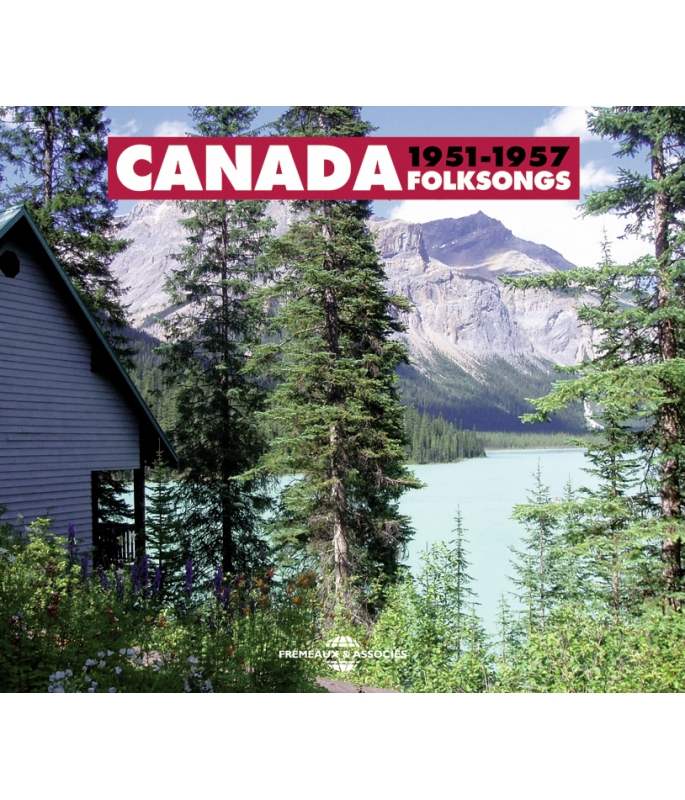
FRENCH & ENGLISH SONGS, COUNTRY, NATIVE MUSIC
FRENCH & ENGLISH SONGS, COUNTRY, NATIVE MUSIC
“Canada is a political entity which is not represented by one individual culture, but by various traditions transmitted through immigration during the history of the country. This double boxed set, directed by Martin Duchesne, portrays the multiple aspects. It features Quebec versions of old songs from France, English versions from the United Kingdom and the US as well as bona fide Canadian songs. This perspective of Canadian folklore equally covers the culture of the First Nations, the first Indian nations with a linguistic culture which marked the land as much as French or English-speaking culture (Ottawa, Toronto, etc.). With this set of 57 songs, Frémeaux & Associés presents a historiographical panorama of cultural diversity, a cross-sectional view of all forms and every level of expression, and affirms the country’s extraordinary richness.” Patrick Frémeaux
“Contrary to the French anthropological vision which generally consists of studying external cultures often corresponding to the colonized countries, the Canadian anthropology must face the multiplicity of its own culture, shared between the Western heritage and the Indian usual art of “First Nations”. This 2CD set evidently represents the individuality of Canadian’s spirit, based on the diversity of its origins.” Lola Caul-Futy Frémeaux (Anthropology student at Simon Frazer University of Vancouver)
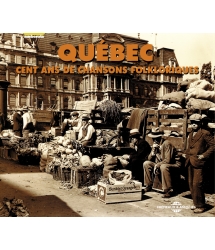
CENT ANS DE CHANSONS FOLKLORIQUES
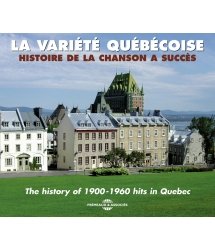
HISTOIRE DE LA CHANSON A SUCCES
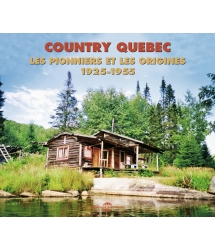
LES PIONNERS ET LES ORIGINES 1925 - 1955
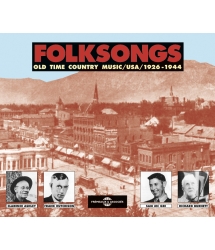
OLD TIME COUNTRY MUSIC 1926 - 1944




-
PisteTitleMain artistAutorDurationRegistered in
-
1Lord Gordon ReelKenneth FaulknerTraditionnel00:01:191956
-
2The Squid Jiggin GroundAlan MillsTraditionnel00:03:051953
-
3I'M Going To Get MarriedEdward GallagherTraditionnel00:03:021956
-
4The Bad Girls LamentWade HemsworthTraditionnel00:02:521955
-
5Chin MusicAngelo DornanTraditionnel00:00:431956
-
6A La Claire FontaineHélène BaillargeonTraditionnel00:02:311957
-
7Le Petite MoineAllan KellyTraditionnel00:02:011957
-
8Boys Of The IslandAllan MillsTraditionnel00:01:531957
-
9The False Knight Upon The RoadEdmund HenneberryTraditionnel00:02:011956
-
10Lots Of Fish In Bonavist HarborKen PeacockTraditionnel00:01:291956
-
11Anti Confederation SongAlan MillsTraditionnel00:01:431953
-
12Pretty SusanAngelo DornanTraditionnel00:02:511957
-
13The Welcome TableCharles OwenTraditionnel00:02:201956
-
14Old TuneEdmund HenneberryTraditionnel00:00:361956
-
15Galop de La MalbaieJoseph JeanTraditionnel00:01:221957
-
16Laquelle Marierons-NousJacques LabrecqueTraditionnel00:01:361957
-
17Chanson de MensongesMme beavanTraditionnel00:02:041957
-
18Auprès de Ma BlondeHélène BaillargeonTraditionnel00:02:071952
-
19Violon en DiscordeJean CariganTraditionnel00:02:321956
-
20Tous les Gens du PlaisirMme William BeavanTraditionnel00:01:311957
-
21A la Claire Fontaine, Ah! Tu Danses Bien MadeleineMme Jean-Louis AudetTraditionnel00:00:521956
-
22Vive la Canadienne!Alan MillsTraditionnel00:01:441952
-
23She Was Poor But She Was HonestDerek LambTraditionnel00:03:411956
-
24A Young Man Lived in Belfast TownTom KinesTraditionnel00:02:251957
-
25The Wee-Wee German LairdieMax DunbarTraditionnel00:01:231956
-
26Pastoral d'AuvergneLucie De Vienne BlancTraditionnel00:02:541957
-
27A Paris sur le Petit PontJacques LabrecqueTraditionnel00:01:201957
-
28Danse CarréeAldor MorinTraditionnel00:02:431951
-
29Shining Birch TreeWade HemsworthTraditionnel00:02:461955
-
30The Shantyboys AlphabetSam CampsallTraditionnel00:02:491956
-
PisteTitleMain artistAutorDurationRegistered in
-
1The Franklin ExpeditionWade HemsworthTraditionnel00:01:291955
-
2The Murder Of Fc BenwellLamon TildenTraditionnel00:01:561956
-
3The Poor Little Girls Of OntarioMme Hartley MinnnieTraditionnel00:01:571956
-
4The Black Fly SongWade HemsworthTraditionnel00:03:051955
-
5An Indian Sat In His Little Bark CanoeMme Tom SullivanTraditionnel00:03:091957
-
6The Northern Trappers Rendez-vousJack LoewenTraditionnel00:02:571957
-
7The Little Old Sod ShantyAlan MillsTraditionnel00:02:351956
-
8Un Canadien ErrantAlan MillsTraditionnel00:02:311956
-
9The Alberta HomesteadAlan MillsTraditionnel00:02:381956
-
10A Poor Lone Girl in SaskatchewanAnne HaldermanTraditionnel00:03:351957
-
11The Klondike Gold RushAlan MillsTraditionnel00:01:321956
-
12The Lookout in The SkyStanley G.TriggsTraditionnel00:02:041956
-
13The Story Of Weldon ChanKaren JamesTraditionnel00:02:231957
-
14Lake Of CrimsonStanley G.TriggsTraditionnel00:01:141956
-
15War DanceWilliam PaulTraditionnel00:02:471956
-
16Hunting Black BearSebastian Mac KenzieTraditionnel00:01:491957
-
17Victory SongRoderick ThomasTraditionnel00:00:491957
-
18War Song World War IIGeorge NicotineTraditionnel00:01:411955
-
19Warriors Death SongMale voicesTraditionnel00:02:031955
-
20Grass Dance BloodMale voicesTraditionnel00:02:151955
-
21Owl Dance BloodAdam DelaneyTraditionnel00:01:221955
-
22Lucky Stone SongOne GunTraditionnel00:01:151955
-
23War Song BlackfootCalf RobeTraditionnel00:00:551955
-
24Children's Game InuitKasugatTraditionnel00:01:531954
-
25I Sing About The DanceUluyokTraditionnel00:02:431954
-
26Before We Came To This ReligionEevalooTraditionnel00:02:001954
-
27Girls Game InuitAngutnakTraditionnel00:02:461954
Canada Folksongs
Canada Folksongs
1951-1957
MOT DU DIRECTEUR ARTISTIQUE
Selon des statistiques récentes, la population du Canada est composée à plus de 36% de Canadiens d’origine britannique, 29% d’origine française et 32% dont les ancêtres sont venus des quatre coins du globe, particulièrement des pays d’Europe. La dernière fraction de 3% représente les “Premières nations”. Au Canada, la table est donc mise depuis plusieurs siècles pour accueillir la diversité culturelle et ce sera en musique que cette magnifique courtepointe de traditions orales et instrumentales sera dévoilée. Les Français, on le sait, commencèrent à coloniser la partie est du Canada, ainsi que la côte du fleuve Saint-Laurent dès le début du XVIIIe siècle. Les premiers colons européens, venus de toutes les provinces de France, apportèrent avec eux leurs connaissances, leurs métiers, leurs coutumes et traditions, sans oublier leurs contes, leurs danses et leurs chansons. En 1760, après bien des guerres, ce Canada d’alors passa sous la domination anglaise. Venus en majorité des Îles Britanniques, les nouveaux arrivants s’installèrent dans ce pays qu’ils adoptèrent, comme les Français l’avaient fait un siècle et demi auparavant, et ensemble, ces deux groupes ethniques bâtirent le Canada d’aujourd’hui. L’évolution de la chanson folklorique de langue française dut se faire en vase clos, pour ainsi dire. En effet, à partir de la conquête, les contacts avec la France furent interrompus et seule la tradition orale conserva les chansons venues avec les premiers colons français, formant ainsi la plus grande partie de notre folklore chanté. En langue anglaise, la chanson traditionnelle canadienne puisa sa source dans les Îles Britanniques, mais a été grandement influencée par nos voisins du Sud, les États-Unis, et ce principalement dans les provinces centrales. Étant de même langue, il semblerait que la chanson ne se soit guère souciée des douaniers et des frontières, et qu’elle ait traversé gaiement d’un pays à l’autre. Dans les provinces de l’Est, sur l’Atlantique, elle a fleuri de façon plus autonome et, comme la chanson de langue française, elle s’est adaptée au pays avec les années, pour devenir canadienne, comme ses habitants.
Nos ancêtres ont naturalisé leurs chansons graduellement, en les chantant là où ils en avaient besoin, en changeant parfois les airs, parfois les paroles ou encore en adoptant le rythme à leurs divers travaux. Le canotier qui prit les paroles d’une chanson de cour prétentieuse du XVIIIe siècle, avec son air insignifiant, pour en faire une chanson à avironner, ne se doutait pas que quelques générations plus tard, sa chanson serait complètement transformée par la propagation orale, qu’elle s’appelerait “À la claire fontaine”, et qu’après avoir parcouru toutes les rivières du Canada, elle deviendrait l’une des plus belles chansons connues en langue française. Dans ce cas, comme dans bien d’autres, non pas un homme, mais la tradition orale est devenue un grand compositeur et le temps, en grand orfèvre qu’il est, s’est amusé à ciseler finement une chanson qu’un marin, un paysan ou un bûcheron lui avait confiée. Cette anthologie est un reflet de l’héritage culturel de nos ancêtres canadiens A Mari usque ad Mare et des Premières Nations qui peuplèrent le pays. On y trouve des versions canadiennes de vieilles chansons venues de France, du Royaume-Uni et des États-Unis, ainsi que des chansons purement canadiennes. Le portrait du Canada folklorique ne saurait être complet sans ce détour impératif chez les Premières Nations, que nous connaissons toujours très peu. Dans les années cinquante et soixante, le distributeur canadien du catalogue Folkways Records de New York, Samuel Gesser (Montréal, 7 janvier 1930), réalise combien était riche l’héritage folklorique du Canada. Le propriétaire de Folkways, Moses Asch, l’encouragea à faire ses propres enregistrements de ce qu’il appelait “le grand pays nordique méconnu”. Ces paroles l’incitèrent à parcourir le Canada et à dénicher les nombreux collectionneurs et interprètes de folklore canadien et à graver sur disque leurs prestations intemporelles. Il lui semblait qu’ils n’étaient pas reconnus à leur juste valeur.
Quelques-uns de ces collectionneurs de chansons folkloriques avaient déjà commencé à enregistrer, notamment : Ken Peacock de Terre-Neuve, helen Creighton de Nouvelle-Écosse, Louis Manny du Nouveau-Brunswick, Marius Barbeau du Québec, Edith Fowke de l’Ontario et Barbara Cass-Beggs de la Saskatchewan. Marius barbeau, dont la collection à l’époque regroupaient plus de 13 000 titres, avait commencé à collectionner en 1912 pour le compte du Musée national du Canada, et Helen Creighton, qui avait commencé en 1928, avait réussi à amasser plus de 4 000 chansons. Samuel Gesser souhaitait à l’époque que l’on trouve dans ses nombreux enregistrements l’esprit de ce patrimoine magnifique, diversifié, mais aussi négligé, mais surtout des gens qui le composent et qui l’ont rendu vivant... encore aujourd’hui. Samuel Gesser fut intrônisé en 2006 au Panthéon des auteurs et compositeurs canadiens, pour son apport patrimonial extraordinaire à l’histoire de la chanson du Canada et ainsi qu’à l’histoire de l’enregistrement sonore canadien. Ce corpus de 2 CD met en exergue une sélection de gravures des années cinquante réalisées par Samuel Gesser, puisées dans l’imposante réalisation discographique de près de cent disques qu’il a laissé en héritage. Frémeaux & Associés nous fait l’honneur aujourd’hui d’éditer le travail de XXI-21 Productions pour une diffusion mondiale du patrimoine des musiques canadiennes.
Martin DUCHESNE
© 2008 XXI-21 PRODUCTIONS - FRÉMEAUX & ASSOCIÉS
NOTE FROM THE PUBLISHERS
According to recent statistics, the population of Canada is composed of more than 36 % Canadians of British origin, 29 % of French origin and 32 % whose ancestors came from the four corners of the world, specially from Europe. The last 3 % represents the First Nations. In Canada, the stage is therefore set since many centuries to welcome this whole cultural interbreeding and music will reveal this wonderful quilt of oral and instrumental traditions. The Frenchmen, as everyone knows, began to colonize the eastern part of Canada, as well as the St-Lawrence coast since the early Eighteenth Century. The first European settlers who came from all the provinces of France brought along their knowledge, trades, customs and traditions, as well as their legends, dances and songs. In 1760, after many battles, Canada came under English rule. The newcomers who were mostly from British Isles, settled in this country of adoption as the French had done a century and a half before them. Together, these two ethnic groups built today’s Canadian country. The evolution of French folk song occurred in isolation as it were. For ever since the British conquest, all communication with France was cut off. It was only through oral tradition that the songs brought by the first French settlers remained alive to form the greater part of our folk songs. English traditional songs took inspiration from the British Isles, but were greatly influenced by our southern neighbours, namely the United States. This was mainly so in the central provinces. Since they shared a common language, it seems that English songs didn’t care much about borders and customs officers. Happily they went from country to country. In the Eastern provinces of the Atlantic shores, they flourished independently and like their French counterparts, adapted to the country as years went by to become as Canadian as the people of the land.
Our ancestors absorbed these songs gradually by singing them where there must be song, sometimes changing the melody or the lyrics, or by adopting the rhythm to their different jobs. The boater who took the lyrics to a pretentious song from the Eighteenth Century with its insignificant melody to turn it into a boat song had no way of knowing that after a few generations, his song would be totally transformed by oral propagation and be known as ’’À la claire fontaine’’. After having travelled all the rivers of Canada, it would become one of the most beautiful French songs. In this case, as in many others, it wasn’t man but oral tradition that turned into a great composer and time, that great expert, played at polishing the song that a sailor, a peasant or a lumberjack had entrusted him with. This anthology is a reflection of the cultural heritage of our A Mari usque ad Mare Canadian ancestors and the First Nations who populated our country. Therein are to be found Canadian versions of old songs from France, the United Kingdom and the United States, as well as purely Canadian songs. No picture of Canadian folklore would be complete without an imperative detour to the First Nations which still remain quite unknown to us. In the Fifties and Sixties, the Canadian distributor of the New York Folkways Records catalog, Samuel Gesser (Montreal January 7, 1930), realized how rich was Canada’s folk heritage. Folkways owner Moses Asch encouraged him to make his own recordings of what he called ’’the great unknown Northern country’’. These words drove him to travel all over Canada to unearth the many collectors and performers of Canadian folklore and record their timeless performances. It seemed to him that they weren’t recognized for their worth.
Some folk song collectors had already begun recording, namely Newfoundland’s Ken Peacock, Nova Scotia’s Helen Creighton, New Brunswick’s Louis Manny, Québec’s Marius Barbeau, Ontario’s Edith Fowke and Saskatchewan’s Barbara Cass-Beggs. Marius Barbeau had begun to collect more than 13,000 songs in 1912 for the Canadian National Museum while Helen Creighton had gathered more than 4,000 songs since 1928. Samuel Gesser wished at the time that his many recordings preserve the spirit of this wonderful and varied but neglected heritage; he moreover hoped to find the people who composed and brought it alive… even today. Samuel Gesser was inducted in 2006 into the Canadian Hall of Fame for his extraordinary national contribution to the history of Canadian song and sound recordings. This 2 CD corpus (now at Frémeaux & Associés) brings out a selection of recordings from the fifties produced by Samuel Gesser, taken from the great record production of nearly one hundred recordings he left us.
Martin DUCHESNE
© 2008 XXI-21 PRODUCTIONS - FRÉMEAUX & ASSOCIÉS
CD1
01 Lord Gordon Reel 1’13 - Kenneth Faulkner, violin / violon - (NS) FM 4006 - 1956
Cette polka nous vient des Îles Britanniques.
This tunes comes from the British Isles and is played for the polka.
02 The Squid-Jiggin’ Ground 3’00 - Alan Mills and / et Gilbert Lacombe, guitar / guitare - (NF) FM 6831 - 1953
Peut-être la plus populaire de toutes les chansons terre-neuviennes; elle a été écrite par un professeur d’école, Arthur R. Scammell. Elle décrit les entourloupettes qui se produisent lorsque les pêcheurs vont aux calmars. Ceux-ci ont la méchante habitude de projeter un jet de liquide noirâtre lorsqu’on les dérange ou qu’on les attrape.
Perhaps the most popular of all Newfoundland songs, it is one written by a school teacher, Arthur R. Scammell. It describes the shenanigans that go on when the fishermen go “squid-jiggin’”. The squid have a nasty habit of squirting forth a dark, gooey liquid when disturbed or caught.
03 I’m Going To Get Married 2’56 - Mrs. Edward Gallagher - (NS) FM 4006 - 1956
Chaque jeune fille envisage son mariage avec enthousiasme, et quelques-unes d’entres elles expriment leurs heureuses pensées en chanson.
Every young girl looks forward to her marriage and some express their happy thoughts in song.
04 The Bad Girl’s Lament 2’47 - Wade Hemsworth, guitar / guitare - (NS) FW 6821 - 1955
Cette chanson triste est évidemment une version antérieure de la vieille ballade qui engendra « The Streets of Laredo » et « St. James Infirmary ». D’après le refrain, il semble que toutes trois viennent d’une chanson irlandaise de régiment.
This sad song is obviously an earlier version of the old ballad that begat “The Streets of Laredo” and “St. James Infirmary”. From the chorus it is assumed that all three came from an Irish regimental song.
05 Chin Music 0’37 - Angelo Dornan - (NB) FM 4006 - 1956
Dans les provinces maritimes, jamais une danse ne tombe à l’eau pour cause de manque d’instrument de musique. Quand une telle situation se présente, quelqu’un chante une mélodie dansante tandis que les pieds de l’assemblée battent la mesure.
A dance in the Maritime Provinces is never spoiled because no musical instrument is available. When this happens somebody sings a dance tune while he and others keep time with their feet.
06 À la claire fontaine 2’27 - Hélène Baillargeon and / et Alan Mills ; Gilbert Lacombe, guitar / guitare
(NB) FW 6923 - 1957
Une des chansons folkloriques préférées, non seulement des Acadiens, mais aussi de tous les Canadiens-Français; c’est la complainte d’un amoureux causée par une querelle avec sa bien-aimée parce qu’il avait refusé de lui donner un bouquet de roses.
One of the favorite folk songs, not only of Acadians, but of all French-speaking Canadians, is a lover’s lament occasioned by a quarrel with his sweetheart because he refused to give her a bouquet of roses.
07 Le petit moine 1’51 - Allan Kelly - (NB) FM 4053 - 1957
Cette comique chanson française raconte l’amusante histoire d’un moine bien pensant qui tente d’aider une fille de laiterie à traire une vache.
This comical French song tells the amusing story of a well-meaning monk who tries to help a dairymaid milk a cow.
08 Boys Of The Island 1’46 - Allan Mills ; Gordon Fleming, accordion / accordéon - (PE) FW 8744 - 1957
La victime de cette chanson fut enterrée dans un petit cimetière catholique à l’extérieur de Boiestown, où on peut lire sur sa tombe bien entretenue : « Peter Amberly. Décédé 1881 ».
The victim described in this song was buried in a small Catholic cemetry just outside of Boiestown, where his neatly-kept grave simply reads: Peter Amberly. Died 1881.
09 The False Knight Upon The Road 1’54 - Edmund Henneberry ; Kenneth Faulkner, violin / violon
(NS) FM 4006 - 1956
Cette ballade est une des plus anciennes versions de toutes les ballades populaires anglaises ou écossaises qui soient. Un excellent exemple de ballade devinette.
This ballad is one of the oldest versions of any English or Scottish popular ballad found anywhere. It is an excellent example of the riddle ballad.
10 Lots Of Fish In Bonavist’ Harbor 1’22 - Ken Peacock, guitar / guitare - (NF) FG 3505 - 1956
Une chanson locale sur laquelle on danse souvent. La chanson est également connue sous le titre de «The Feller from Fortune», le héros qui apparaît dans cette version. Il en existe aussi d’autres versions dont certaines sont obscènes.
A local song often used for dancing. The song is also known as “The Feller from Fortune”, the hero who appears in this version. There are also similar versions, some printable, others not.
11 Anti-confederation Song 1’38 - Alan Mills ; Gilbert Lacombe, guitar / guitare - (NF) FW 6831 - 1953
Bien que le vote confédéré de Terre-Neuve en 1949 était en faveur de l’annexion au Canada, les archives historiques font état de plusieurs occasions antérieures où les Terre-Neuviens refusèrent cette union.
Although Newfoundland’s “confederate vote” in 1949 was in favour of joining Canada, history records several other earlier occasions when Newfoundlanders turned down the proposition of union with Canada.
12 Pretty Susan 2’47 - Angelo Dornan - (NB) FM 4053 - 1957
Cette charmante version canadienne d’une ancienne ballade irlandaise est chantée avec panache, avec des notes d’agrément traditionnelles.
This charming Canadian version of an old Irish ballad is sung in fine style, with traditional “grace-note” embellishments.
13 The Welcome Table 2’13 - Charles Owen ; Isabel Owen, guitar / guitare, and Family / et famille - (NS) FM 4006 - 1956
Il existe des hameaux noirs en périphérie de plusieurs villages de Nouvelle-Écosse. Les documents font état de la présence des Noirs aussi tôt que 1750. Après la guerre de 1812, quelque 2 000 esclaves y demandèrent et y obtinrent leur liberté.
There are Black settlements on the fringe of many Nova Scotian towns. Blacks are mentioned in documents as early as 1750. After the War of 1812, some 2,000 slaves sought and obtained freedom there.
14 Old Tune 0’31 - Edmund Henneberry, harmonica - (NS) FM 4006 - 1956
Il arrive fréquemment qu’un musicien apprenne une chanson d’un autre musicien sans pour autant en apprendre le titre.
It frequently happens that a player learns a tune from another musician, without ever learning the name of this tune.
15 Galop de La Malbaie 1’15 - Joseph and / et Alfred Jean, violins / violons - (QC) FE 4482 - 1957
Cet air est chanté sur un pas de danse rapide et est célèbre au Nord du Québec.
This tune is sung to a quick-dance step and is well-known in northern Quebec.
16 Laquelle marierons-nous ? 1’59 - Jacques Labrecque - (QC) FG 3560 - 1957
L’une des nombreuses chansons de mariage amenées de France par les premiers colons dans laquelle une jeune fille choisit un mari suite à un baiser mémorable.
One of the many marrying songs brought over from France by the early settlers in which the girl chooses a husband because of a memorable kiss.
17 Chanson de mensonges 1’30 - Mme Beavan and / et Monique Beauchamps - (QC) FE 4482 - 1957
Cette « chanson de mensonges » traite de la vie d’un fermier et est habituellement chantée pour la danse, alors que les danseurs entrent dans la mêlée au refrain.
This “song of lies” is about the life of a farmer and is usually sung for dancing where the dancers join in on the chorus.
18 Auprès de ma blonde 4’00 - Hélène Baillargeon and / et Alan Mills ; Gilbert Lacombe, guitar / guitare - (QC) FW 6918 - 1952
Cette chanson venue de France, rendue célèbre par les soldats de la Grande Guerre, chante la joie de dormir auprès de sa bien-aimée au grand air, tandis que chantent les oiseaux.
Made famous by the soldiers during WW1; this song from France extolls the joys of sleeping next to a loved one in the open air while the birds are singing.
19 Violon en discorde 2’24 - Jean Carignan, violin solo with foot-clogging / violon solo et tapements de pied - (QC) FW 6951 - 1956
Le violon est accordé d’une manière différente sur cette chanson, une pratique commune de plusieurs violoneux canadiens.
The violin is tuned in a different manner for this song, a feature that often varies with many Canadian fiddlers.
20 Tous les gens du plaisir 1’25 - Mme William Beavan - (QC) FE 4482 - 1957
This drinking song tells of the pleasures of a well-laid table and of agreeable company.
Cette chanson de beuverie parle des plaisirs d’une table bien garnie et de la bonne compagnie.
21 À la claire fontaine - Ah ! Tu danses bien Madeleine 0’45 - Mme Jean-Louis Audet and her pupils / et ses élèves - (QC) FC 7214 - 1956
Cette chanson est utilisée comme une chanson de jeu qui est très souvent entendue au Québec lors de la récréation à l’école.
This song is used as a game song which is heard many times in Quebec, during recess at school.
22 Vive la Canadienne 1’36 - Alan Mills ; Gilbert Lacombe, guitar / guitare - (QC) FW 6929 - 1952
Cette chanson peut être chantée lors de presque n’importe laquelle prestation festive. La mélodie est empruntée d’une ancienne ballade française décrivant les trois filles d’un prince. Les paroles rendent maintenant hommage à la féminité et relatent les événements heureux d’une noce.
This song can be sung on almost any festive occasion. The melody is that of an ancient French ballad describing a Prince’s three daughters. The words now pay tribute to womanhood and tell of a happy time at a wedding party.
23 She Was Poor - But She Was Honest 3’35 - Derek Lamb, guitar / guitare with Jean Carignan, violin / violon ; Peter Weldon, banjo and Jack Nissenson, vocal / chanteur. (QC) FW 8707 - 1956
Cette chanson du London Music Hall fut importée au Canada par des immigrants britanniques ; elle raconte la situation pénible de la classe ouvrière, qui est « pareille partout au monde ».
This London Music Hall song was brought over to Canada by British immigrants and tells of the plight of the working class, that “it’s the same the whole world over”.
24 A Young Man Lived - In Belfast Town 2’19 - Tom Kines, guitar / guitare - (QC) FW 3522 - 1957
Cette chanson d’origine irlandaise décrit les aventures d’une jeune demoiselle et d’un jeune homme, alors que ce dernier « s’enfarge » dans les chaudrons.
This song of Irish origin describes the adventures of a young man with a young maid. He got into trouble by tumbling into crockery ware.
25 The Wee, Wee German Lairdie 1’13 - Max Dunbar, guitar / guitare - (QC) FG 3006 - 1956
Cette chanson écossaise vit le jour après l’union du Parlement en 1707 et les débuts de la royauté de Hanovre avec Georges 1er.
This song from Scotland has its origins after the union of Parliament in 1707 and the beginning of the Hanoverian royalty with George I.
26 Pastoral (d’Auvergne) 2’52 - Lucie de Vienne Blanc ; J.P. Vinay, oboe / hautbois - (QC) FW 8778 - 1957
Le berger blague avec un compagnon : « N’as-tu point vu le lièvre que nous pourchassions ? » Et le compagnon de répliquer: « J’ai fait mieux, je l’ai attrapé et en ai fait de bien bonnes choses. »
The shepherd is joking with a distant companion: “Have you seen the hare we chased?” The companion answers “I did better, I caught it and made many things of it”.
27 À Paris sur le petit pont 1’14 - Jacques Labrecque - (QC) FG 3560 - 1957
Les habitants du 4ème arrondissement de Paris, connus comme celui de l’Hôtel de ville, sont tous familiers avec le Petit Pont. Il s’agit ici d’une chanson de danse à propos de ce pont, où un père a construit une maison.
The people of the 4th district in Paris, the one known as the ’’City Hall’’ ward, all know the Little Bridge. This is a dance song about this same bridge where a father built a house.
28 Danse carrée 2’39 - Aldor Morin, harmonica with / avec Jean Carignan, violin / violon ; Edgar Morin, jigs and calls / gigues et « calleur » ; Bob Hill, guitar / guitare and / et Madame Richard, Gérard Delorier, singers / chanteurs. (QC) FW 6951 - 1951
Ce reel, accompagné des tapements de pieds du joueur d’harmonica, ressemble à une danse carrée américaine.
This reel, complete with foot tapping by the harmonica player is similar to the American barn dance or square dance.
29 Shining Birch Tree 2’45 - Wade Hemsworth, guitar / guitare - (ON) FW 6821 - 1955
M. Hemsworth dit : « J’ai eu l’idée de cette chanson alors que j’arpentais la Côte-Nord du Québec et le chemin de fer du Labrador. » Le thème est connu de tous ceux qui ont travaillé dans la brousse.
Mr. Hemsworth says: “I got the idea for this song when I was surveying for the Quebec North Shore and Labrador Railroad.” The theme is familiar to anyone who has worked in the bush.
30 The Shantyboys’ Alphabet 2’45 - Sam Campsall - (ON) FM 4052 - 1956
Cette chanson de bûcheron provient du plus vieux « Sailor’s Alphabet » et sa mélodie est similaire à celle de « Villikens and His Dinah ».
This lumberjack song comes from the older “Sailor’s Alphabet” and the tune here is similar to “Villikens and His Dinah”.
CD2
01 The Franklin Expedition 1’22 - Wade Hemsworth, guitar / guitare - (ON) W 6821 - 1955
Cette chanson fut écrite en Angleterre. Son sujet tragique est étroitement lié à l’histoire du Nord canadien.
This song was written in England. Its tragic subject is closely linked with the history of Canada’s north.
02 The Murder of F.C. Benwell 1’55 - Lamon Tilden, guitar / guitare - (ON) FM 4005 - 1956
Cette ballade retrace le meurtre le plus célèbre de l’histoire de l’Ontario. En 1890, James Reginal Birchall fut condamné et pendu pour le meurtre de Frederick C. Benwell, dont le cadavre fut retrouvé dans un marécage.
This ballad recalls the most famous murder case in Ontario’s history. In 1890, James Reginal Birchall was tried and hanged for the murder of Frederick C. Benwell, whose body was found in a swamp.
03 The Poor Little Girls - Of Ontario 1’50 - Mrs. / Mme Hartley Minniefie - (ON) FM 4005 - 1956
Cette chansonnette a circulé en Ontario à la fin du dix-neuvième siècle et au début du vingtième. Elle fut bientôt reprise par d’autres et se transforma en voyageant vers l’Ouest.
This little ditty circulated in Ontario in the latter part of the 19th century and the beginning of the 20th century. It was soon adopted by others and changed as it went west.
04 The Black Fly Song 2’58 - Wade Hemsworth, guitar / guitare - (ON) FW 6821 - 1955
Quiconque a passé un été dans le Grand Nord canadien sympathisera avec le sentiment exprimé dans cette chanson de M. Hemsworth. Il l’a composée alors qu’il travaillait pour la Ontario Hydro Electric Commission.
Anyone who spent a summer in the northern bush country will sympathize with the sentiment of Mr. Wade Hemsworth’s song. He wrote it while working for the Ontario Hydro Electric Commission.
05 An Indian Sat - In His Little Bark Canoe 3’05 - Mrs. / Mme Tom Sullivan - (ON) FM 4005 - 1957
Parfois appelée « The Indian’s Lament », cette chanson peint une triste image de l’effet de l’homme blanc sur les autochtones. Elle était très souvent chantée dans les bois de la région des Grands Lacs.
Sometimes called ’’The Indian’s Lament’’, this song paints a sad picture of the effect of the white man on the Indians. It was widely sung in the woods of the Great Lakes region.
06 The Northern Trappers - Rendez vous 2’56 - The Loewen Orchestra, Jack Loewen, Martha Loewen, Marvin Loewen, Anne Loewen, Shirley Davidson and / et George Davidson. (MB) FW 8764 - 1957
Cette chanson fut composée par Jack Loewen et est très populaire, spécialement lors de la saison des trappeurs.
This song was composed by Jack Loewen and is ever popular especially during the trappers’ season.
07 The Little Old Sod Shanty 2’28 - Alan Mills ; Gilbert Lacombe, guitar / guitare - (AB) FW 3000 - 1956
Dans les années 1880, le gouvernement canadien offrait des terres gratuites (160 acres) à quiconque s’engageait à y vivre pour une période de trois ans. En une seule année, plus de 60 000 personnes s’établirent au Manitoba en réponse à cette offre.
In the 1880s, the Canadian government offered a free grant of a land (160 acres), provided the settler lived on it for a period of three years. In one year alone some 60,000 people entered Manitoba to take advantage of this offer.
08 Un Canadien errant 2’25 - Alan Mills ; Gilbert Lacombe, guitar / guitare - (MB) FW 3000 - 1956
La triste époque de la rébellion de Riel a poussé un jeune étudiant, M.A. Gérin-Lajoie, à composer cette chanson, utilisant une mélodie française familière.
The unhappy days of the Riel rebellion inspired a young student, M.A. Gérin-Lajoie, to write this song, setting it to the tune of a familiar French chanson.
09 The Alberta Homestead 2’32 - Alan Mills ; Gordon Fleming, accordion / accordéon - (AB) FW 3000 - 1956
Comme « The Little Old Sod Shanty », cette chanson s’inspire d’une complainte américaine, « The Greer County Bachelor ». Les couplets s’accordent à la mélodie de « The Irish Washerwoman ».
Like “The Little Old Sod Shanty”, this song was inspired by an American complaint, “The Greer County Bachelor”. The verses go to the tune of “The Irish Washerwoman”.
10 A Poor Lone Girl - In Saskatchewan 3’28 - Anne Halderman - (SK) FE 4312 - 1957
Cette chanson fut d’abord chantée en Ontario par la mère de Anne sous le titre « The Poor Little Girl of Ontario » et voyagea vers le Manitoba en 1882 quand Anne s’établit dans l’Ouest. Lorsque cette dernière déménagea en Saskatchewan pour enseigner, elle en modifia les paroles.
This song was first sung by Anne’s mother in Ontario as “The Poor Little Girl of Ontario” and brought to Manitoba in 1882 when Anne came west. When she moved to Saskatchewan to teach, she changed the words.
11 The Klondike Gold Rush 1’26 - Alan Mills ; Gordon Fleming, accordion / accordéon - (YK) FW 3000 - 1956
En 1896, un prospecteur de l’Alaska traversa au Yukon et trouva de l’or le long d’un affluent du haut Yukon, appelé le Klondike. Cette chanson concerne la célèbre « ruée vers l’or ».
In 1896, a prospector from Alaska crossed over into the Yukon and found gold along a tributary of the Upper Yukon river, called the Klondike. This song is about the famous ’’gold rush’’.
12 The Lookout In The Sky 1’56 - Stanley G. Triggs, mandoline - (BC) FG 3569 - 1956
M. Triggs a mis en musique un poème du trappeur Harold Smith. C’est l’histoire de Bob Wallace de Shutty Bench, près de Kaslko, Colombie-Britannique, qui était le surveillant du promontoir forestier de Duncan pendant 9 saisons.
Mr. Triggs put music to a poem by the trapper Harold Smith. It is the story of Bob Wallace of Shutty Bench, near Kaslko, BC, who was a lookout-man on the Duncan Lookout for nine seasons.
13 The Story Of Weldon Chan 2’17 - Karen James, guitar / guitare - (BC) FG 3549 - 1957
Cette chanson fut écrite par Arthur Hughes pour M. Chan, un immigrant chinois « illégal » qui était recherché par le service de l’Immigration et qui ne fut apparemment jamais retrouvé.
This song was written by Arthur Hughes for Mr. Chan, an “illegal” Chinese immigrant, who was being sought by the department of immigration and was apparently never found.
14 Lake Of Crimson 1’03 - Stanley G. Triggs, mandoline solo - (BC) FG 3569 - 1956
Cet air de danse fut composé par un homme de Flatbush, Alberta, et fut amené à Lardeau Valley, Colombie-Britannique, par le violoneux Roy Collier.
This dance tune was written by a man in Flatbush, Alberta and was brought to the Lardeau Valley, BC, by fiddler Roy Collier.
15 War Dance / Danse De Guerre - Micmac / chanson micmaque 2’42 - William Paul, Martin Sack, John Knockwood - (NS) FE 4006 - 1956
Une danse de guerre micmaque chantée par le chef Paul accompagné d’autres Micmacs. Il s’agit d’une chanson à propos de Stephen Joseph, qui est décrit comme un grand guerrier.
A Micmac Indian war dance sung by Chief Paul and joined by other Micmacs. This is a song about Stephen Joseph, who is described as a great warrior.
16 Hunting Black Bear / La chasse à l’ours noir - Algonkian / chanson algonquine 1’42 - Sebastien MacKenzie - (QC) FE 4253 - 1957
Cette chanson parle de la chasse à l’ours noir durant l’hiver. Un bâton pointu est enfoncé dans la neige et réveille l’ours hibernant qui, comme il émerge, est abattu.
This song is about hunting black bear in the wintertime. A sharpened pole is poked through the snow and wakes the sleeping bear who, as he emerges, is shot.
17 Victory Song / Chanson de victoire - Cree / chanson crie 0’41 - Mrs. / Mme Roderick Thomas - (SK) FE 4312 - 1957
Il s’agit d’une chanson dont Mme Thomas se rappelle de l’époque de ses grands-parents.
This is a song which Mrs. Thomas remembered from her grandparents’ time.
18 War Song (World War II) / Chanson de Guerre (Seconde Guerre mondiale) - Cree / chanson crie 1’33 - George Nicotine and group / et son groupe - (AB) FE 4464 - 1955
Cette chanson de guerre avec une combinaison de paroles anglaises et de musique autochtone présente d’intéressantes accentuations arythmiques. Les paroles sont: « O brave soldat, sur la terre, sur la mer et dans le ciel, au Japon, Tokyo-o-o, je reste tout de même avec toi. »
This war song with a combination of English words and Indian music, creates interesting off-beat accents. The words are: “Oh brave soldier boy, on the land, on the sea, and in the air, in Japan, Tokyo-o-o, just the same I’m staying with you.”
19 Warrior’s Death Song (For Sitting Bull) / Chant de Mort du Guerrier (Pour Sitting Bull) - Blackfoot / chanson pied-noir 1’57 - Male voices with bass drum / voix masculines et tambour basse - (AB) FE 4464 - 1955
Les rumeurs des exploits de Sitting Bull avaient atteint les tribus des plaines canadiennes bien avant sa visite au Saskatchewan en 1877. Cette chanson fut enregistrée lors d’une reconstitution historique indienne à Fort Qu’Appelle près du site de la visite de Sitting Bull.
News of Sitting Bull’s exploits had reached the Canadian Plains tribes long before his visit to Saskatchewan in 1877. This song was recorded at an Indian pageant in Fort Qu’Appelle near the site of Sitting Bull’s visit.
20 Grass Dance / Danse de l’herbe - Blood 2’09 - Male voices with bass drum / voix masculines et tambour basse - (AB) FE 4464 - 1955
La « danse du Soleil » blood est l’une des plus spectaculaires du Canada et dure de trois à quatre semaines. Pendant cette période, de titanesques festivals et danses sont mis sur pied et plusieurs personnalités du monde sont faites chefs honoraires.
The Blood “Sun Dance” is one of the most spectacular in Canada and lasts three to four weeks. During this period mammoth festivals and dances are staged and many prominent figures in the world are made honorary chiefs.
21 Owl Dance / Danse du Hibou - Blood 1’14 - Adam and / et Wallace Delaney - (AB) FE 4464 - 1955
Cette chanson de la danse du hibou est chantée en harmonie à deux voix, ce qui était très inhabituel dans la musique autochtone.
This Owl Dance song is sung in two-part harmony, which was quite unusual in native music.
22 Lucky Stone Song / Chanson de la pierre porte-bonheur - Blackfoot / chanson pied-noir 1’07 - One Gun - (AB) FE 4464 - 1955
Cette chanson relate l’histoire d’une femme égarée qui trouve une pierre porte-bonheur, qui la ramène vers son village en chantant.
This song tells the story of a woman who is lost and finds a lucky stone that leads her back to her camp by singing the way.
23 War Song / Chanson de Guerre - Blackfoot / chanson pied-noir 0’46 - Wilfred Calf Robe and / et Albert Scalp Lock - (AB) FE 4464 - 1955
Cette chanson est interprétée par deux enfants âgés de neuf et dix ans. Ils ont appris cette chanson traditionnelle de leurs aînés.
This song is sung by two youngsters who are 9 and 10 years old. They learned this traditional song from their Elders.
24 Children’s Game / Jeu d’enfant - Inuit 1’46 - Kasugat and / et Ishmatuk - (NW) FE 4444 - 1954
Deux petites filles, âgées d’environ six ans, se tiennent par la main et jouent en chantant, essayant de ne pas pouffer de rire. Finalement, l’une d’elles ne peut plus se retenir et elles s’esclaffent toutes deux.
Two little girls, about six years old, hold hands and sing a game song, trying to keep from laughing. Finally one of them can hold back no longer, they both burst into laughter.
25 I Sing About The Dance / Je chante de la danse - Inuit 2’35 - Uluyok and / et Tutinat - (NW) FE 4444 - 1954
Les paroles de cette chanson peuvent tourner une danseuse au ridicule : « Regarde la femme, elle est maladroite comme un ours », ou encore elles peuvent en faire son éloge.
The words to this song may ridicule a dancer: ’’Look at the woman, she is clumsy like a bear’’ or they may praise her.
26 Before We Came To This Religion / Avant que nous en soyons arrivés à cette religion - Inuit 1’51 - Eevaloo - (NW) FE 4444 - 1954
À l’époque où cette chanson fut enregistrée, les chamans (sorciers) étaient ce qui ressemblait le plus aux officiers publics dans une tribu inuit. Ils étaient à la fois prêtre et médecin. Une chanson pour chasseurs est: « Que faire? Les animaux ne m’écoutent pas quand je chante. »
At the time this song was recorded, the shamans (medicine men) were the nearest to public officials in an Inuit group. They were both priest and physician. One song for hunters is: ’’How shall I do it? The animals were not influenced by my song when I sing it.’’
27 Girl’s Game / Jeu de la jeune fille - Inuit 2’48 - Angutnak and / et Matee - (NW) FE 4444 - 1954
Les enfants inuit ont d’innombrables jeux dont certains sont très ingénieux. Dans ce jeu deux filles d’environ quinze ans déposent une bouilloire résonante au sol et, se penchant, y chuchotent des mots. Leurs respirations aspirées rythmiques imitent les sons d’outils qu’elles ont entendus au poste de traite de la Baie d’Hudson.
Inuit children have innumerable games, some quite ingenious. In this game, two girls of about 15 years old, placed a kettle-resonator on the ground, bent down and whispered words into it. Their rhythmic aspirated breathing imitated tools they heard at the Hudson’s Bay trading post.
NF [ Newfoundland ] NS [ Nova Scotia ] PE [ Prince Edward Island ] NB [ New Brunswick ] NW [ North West Territories ] BC [ British Columbia ] YK [ Yukon ] QC [ Quebec ] SK [ Saskatchewan ] AB [ Alberta ]
CD Canada Folksongs - 1951-1957 © Frémeaux & Associés. (frémeaux, frémaux, frémau, frémaud, frémault, frémo, frémont, fermeaux, fremeaux, fremaux, fremau, fremaud, fremault, fremo, fremont, CD audio, 78 tours, disques anciens, CD à acheter, écouter des vieux enregistrements, albums, rééditions, anthologies ou intégrales sont disponibles sous forme de CD et par téléchargement.)

